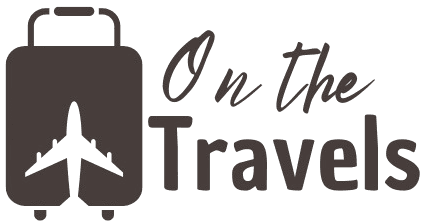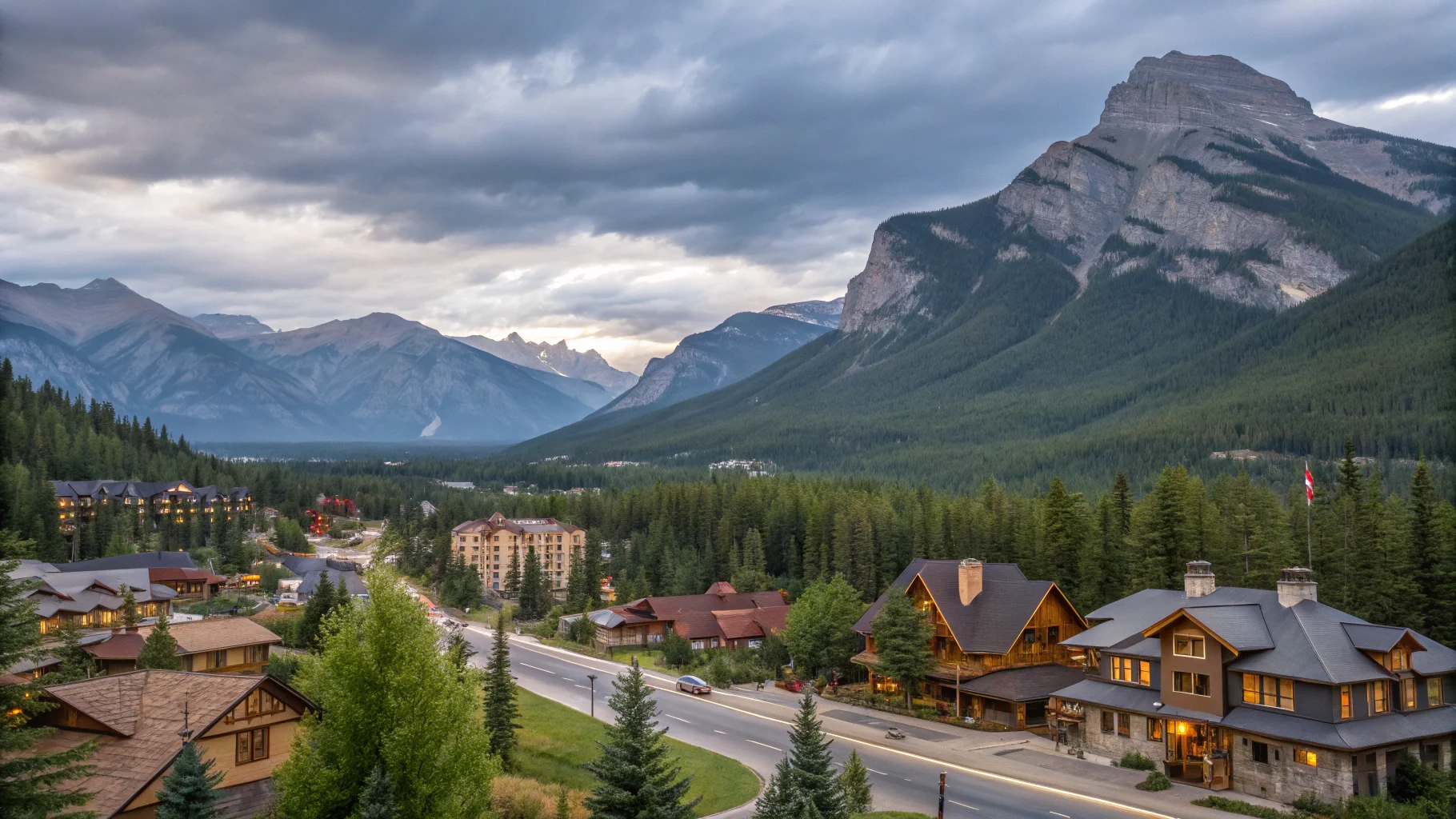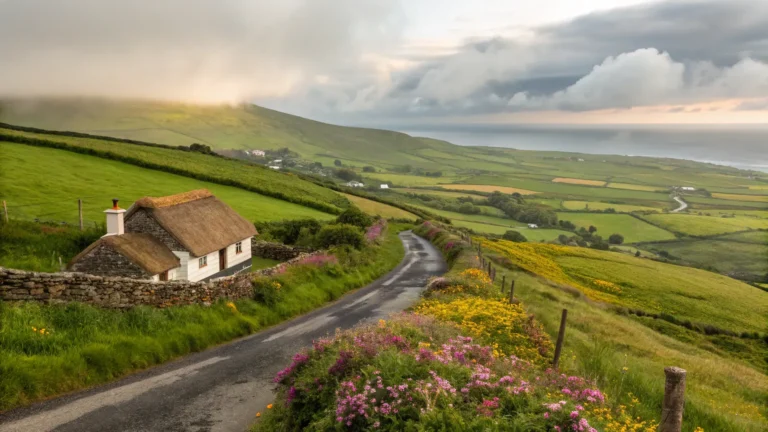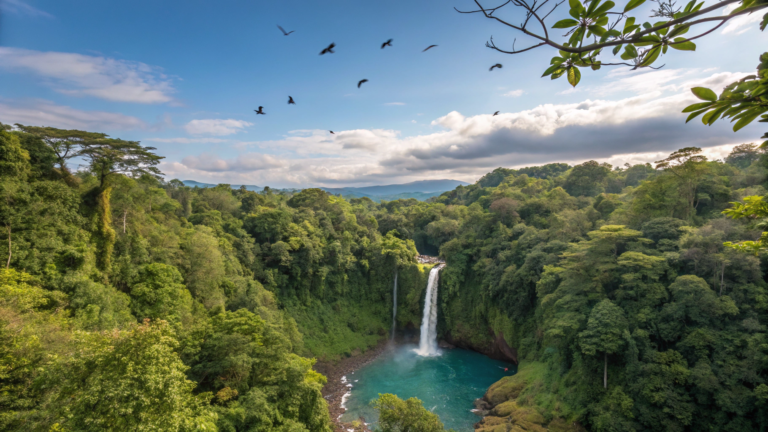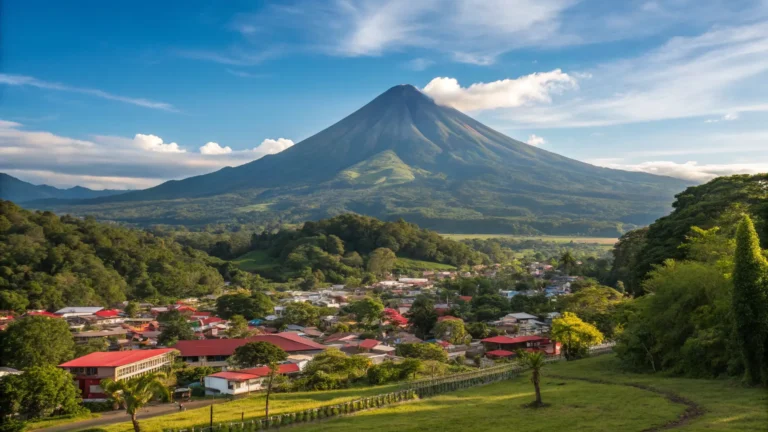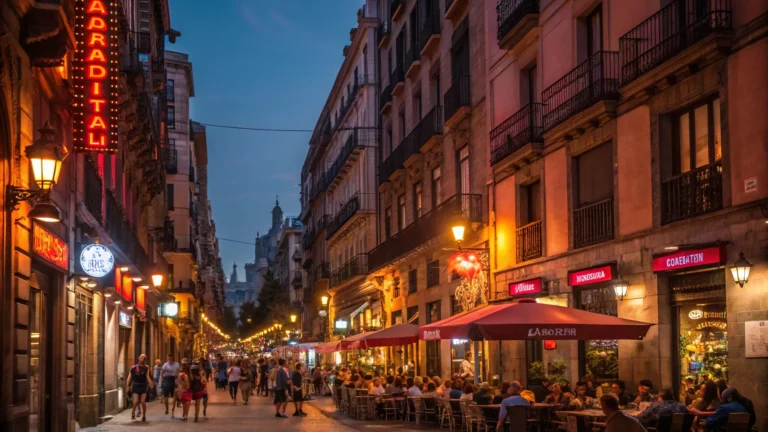Best Time to Visit Banff 6 Things to Know Before You Go
Last updated on June 20th, 2025 at 03:59 pm
Three years ago, I made one of the biggest travel mistakes of my life.
I booked a spontaneous October trip to Banff after seeing Sarah’s gorgeous Instagram photos from her summer visit. “How different could it be?” I thought, packing the same lightweight hiking gear I’d used for summer mountain trips. Well, let me tell you – stepping off that plane in Calgary to 15-degree weather and finding half the attractions closed was a wake-up call I won’t forget.
But you know what? That “failed” trip taught me more about Banff than any guidebook ever could.
Fast forward to today, and I’ve now visited the Canadian Rockies during every single month of the year. Yeah, I’m probably obsessed. But these repeated visits have shown me something important: most people choose their Banff dates completely wrong.
The difference between an okay mountain vacation and one that changes your life? It all comes down to when you show up. And I’m going to share everything I’ve learned so you don’t make the same mistakes I did.
Table of Contents
Why Choosing the Best Time to Visit Banff Comes Down to the Seasons
Most vacation spots are pretty similar year-round. Beach destinations might have rainy seasons, cities have tourist rushes, but the core experience stays consistent. Banff? It’s like visiting four completely different places depending on your timing.
During my July visit in 2022, I hiked 15 different trails, canoed on three lakes, and watched the sunrise from mountain peaks. When I returned that December, literally half the park was inaccessible due to snow, but I experienced Northern Lights dancing over frozen lakes and wildlife tracks crisscrossing pristine powder.
Spring (March through May) brings muddy trails and unpredictable weather, but also incredible wildlife activity. Bears emerge with new cubs, elk move down from high country, and you’ll practically have popular spots to yourself.
Summer (June through August) offers perfect hiking weather and access to everything, but comes with crowds that’ll test your patience and prices that might shock you.
Fall (September through November) delivers my favorite combination: stunning colors, decent weather, and manageable crowds. Those golden larch trees in late September? Pure magic that photos can’t capture.
Winter (December through February) transforms the entire landscape into something from a fairytale, perfect for skiing and winter photography, but demands serious preparation and flexibility.
The 6 Things I Wish Someone Had Told Me
#1 – Crowds Will Either Make or Ruin Your Trip
Here’s something nobody talks about in those glossy travel magazines: summer crowds in Banff can be absolutely brutal. I’m talking parking lots filled by 6:30 AM, two-hour waits for popular attractions, and hiking trails so packed they feel like city sidewalks.
During my peak August visit, I spent more time waiting in lines than actually enjoying nature. The famous Lake Louise shoreline? So crowded with selfie-takers that finding a quiet moment for reflection was impossible.
But here’s what I discovered through trial and error:
MonthCrowd RealityMy ExperienceJanuary-MarchAlmost emptyPeaceful trails, easy parking, actually relaxingApril-MayStarting to fillManageable but growing busierJune-AugustAbsolutely packedEarly morning or late evening visits essentialSeptember-OctoberBusy but bearableGreat balance of access and spaceNovember-DecemberQuiet againWinter wonderland with actual solitude
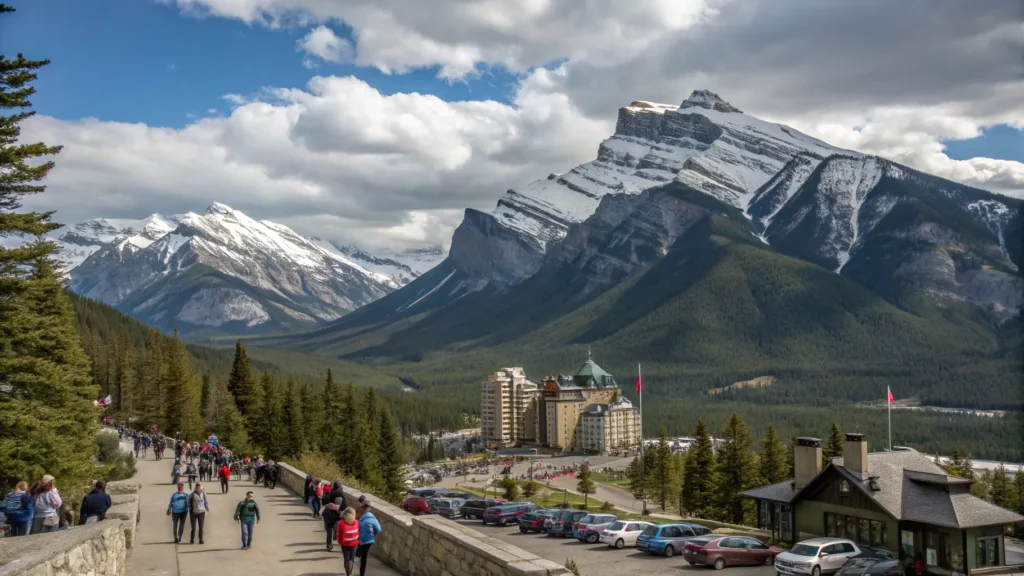

The trick I learned? If you must visit during summer, get up ridiculously early. I’m talking 5 AM wake-up calls. That sunrise hike to Lake Agnes became one of my favorite memories precisely because we had the trail mostly to ourselves.
#2 – Mountain Weather Will Humble You Fast
Remember that disastrous October trip I mentioned? The weather taught me respect for mountain conditions real quick. Within a single day, I experienced sunshine, rain, sleet, and snow. My summer hiking clothes were about as useful as flip-flops in a snowstorm.
Here’s the reality: Banff sits at over 4,500 feet elevation, and weather changes happen fast. The forecast might show sunny skies in town, but drive 30 minutes to higher elevations and you could hit completely different conditions.
What I pack now, regardless of season:
- Waterproof jacket (learned this one the hard way)
- Warm layers I can add or remove quickly
- Proper hiking boots with ankle support
- Sun protection (mountain UV is intense year-round)
- Emergency supplies for sudden weather changes
During my March 2023 visit, temperatures swung from 15°F at sunrise to 65°F by afternoon. I watched unprepared tourists shivering in t-shirts while I stayed comfortable in layers I could adjust throughout the day.
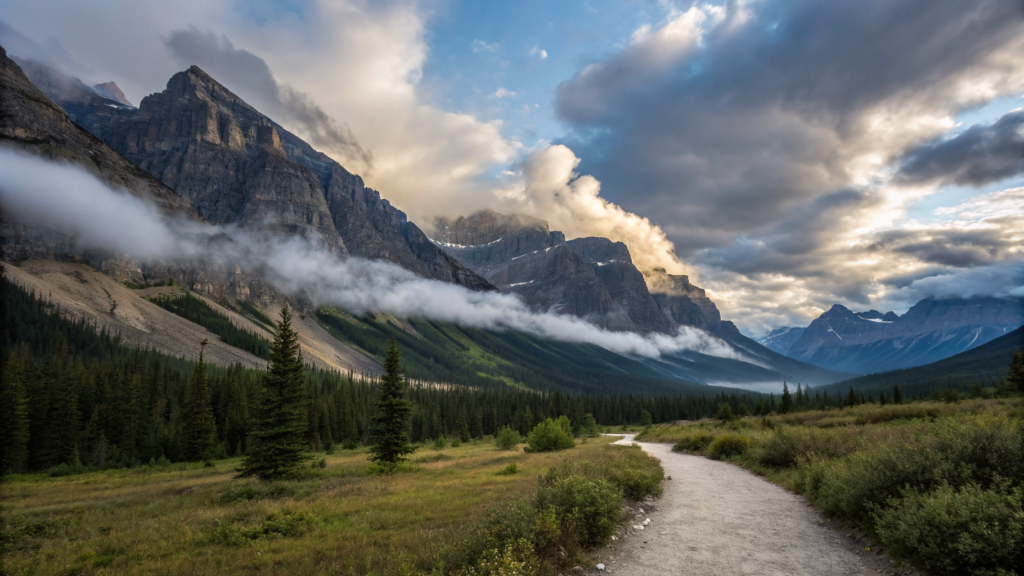

Actually, here’s a insider tip most people miss: check weather for multiple elevations, not just Banff townsite. The conditions at Lake Louise or Moraine Lake can be completely different from what you see in town.
#3 – Activity Access Changes Everything
This one caught me completely off-guard during that first October trip. I had this elaborate itinerary planned around visiting Moraine Lake, only to discover the access road closes from mid-October through mid-June due to avalanche danger. Nobody mentioned that small detail in the travel blogs I’d read.
Different activities have completely different seasonal windows:
ActivityWhen It's AvailableWhat I LearnedMoraine Lake accessMid-June to mid-OctoberRoad closure is non-negotiableHigh-altitude hikingJuly through SeptemberSnow blocks trails longer than expectedLake canoeingMay through OctoberRental places close earlier than you thinkSkiing at resortsDecember through AprilPowder conditions peak in January-FebruaryLarch tree viewingMid-September to early OctoberVery specific timing, worth planning entire trip around
The biggest lesson? Don’t plan your entire trip around one activity without checking seasonal availability first. I’ve seen too many disappointed travelers who built whole vacations around closed attractions.
My September 2021 larch viewing trip perfectly illustrates this. I timed the visit for peak golden color, and it was absolutely spectacular. But friends who arrived just two weeks later found bare trees after an early snowstorm knocked off all the leaves.
#4 – Wildlife Follows Its Own Schedule
Wildlife viewing in Banff isn’t random – animals follow predictable seasonal patterns once you understand them. This knowledge transformed my photography and made every hike more exciting.
Spring wildlife activity is incredible but requires patience. Bears emerge hungry and often with cubs, making for amazing viewing opportunities but demanding extra caution. During my May 2022 visit, I spotted three different bear families in one week, including cubs learning to fish.
Summer brings active wildlife, but animals often retreat to higher elevations or come out during cooler morning and evening hours. Middle-of-the-day summer hiking often means fewer animal encounters.
Fall is absolutely prime time for wildlife enthusiasts. Elk rutting season creates incredible photo opportunities and unforgettable sounds echoing through valleys. I’ll never forget sitting quietly at dawn in September, listening to bull elk bugling their challenges across Bow Valley.
Winter wildlife viewing offers unique opportunities. Animal tracks in snow make spotting easier, and you’ll observe species specifically adapted to harsh mountain conditions.
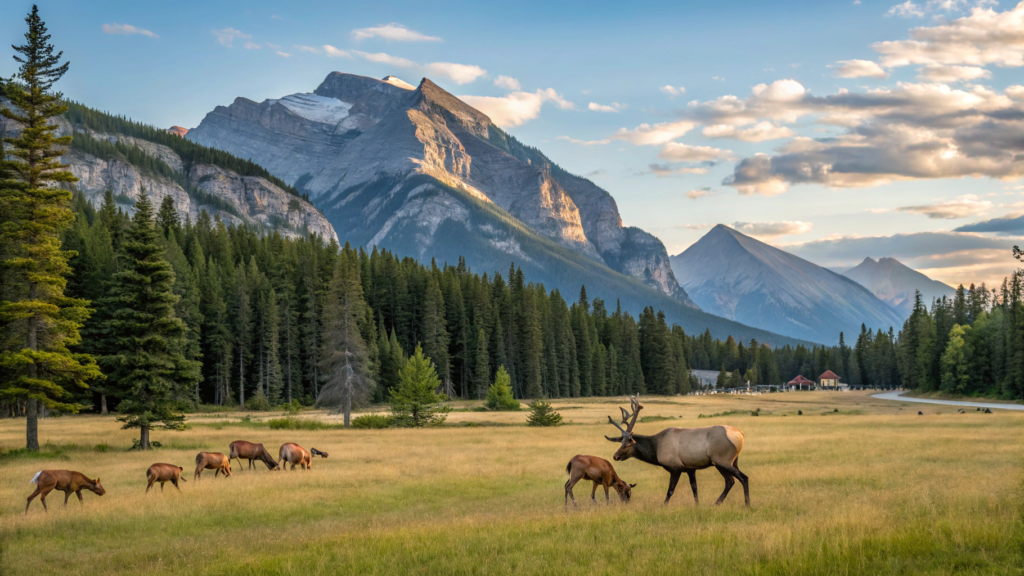

Safety note from experience: always carry bear spray from April through November, and actually learn how to use it. I’ve had three close encounters where having it provided peace of mind, even though I never had to deploy it.
#5 – Budget Reality Goes Way Beyond Hotel Prices
Let me be straight with you about costs – Banff can be expensive, but the pricing structure is more complex than simple high season versus low season rates.
Peak summer pricing shocked me the first time. Hotel rates that were $150 in May jumped to $450 in July for the exact same room. Restaurant prices increase, gas costs more, and even grocery stores raise prices due to tourist demand.
But here’s what most budget guides don’t tell you: shoulder season offers the best value proposition. September visits give you 80% of summer’s benefits at 60% of the cost. You’ll still have great weather and access to most activities, but without the premium pricing.
Money-saving strategies I actually use:
- Stay in Canmore instead of Banff townsite (15-minute drive, often half the price)
- Visit Sunday through Thursday instead of weekends
- Pack trail lunches instead of buying $20 sandwiches in the park
- Book accommodations with kitchenettes to avoid restaurant costs for every meal
- Use Parks Canada annual pass if visiting for more than seven days
My biggest budget discovery? Winter visits can be incredibly affordable if you’re prepared for the conditions. January hotel rates are often 70% lower than summer, and you’ll experience a completely different but equally stunning version of the park.
#6 – Timing Your Reservations Can Make or Break Everything
This lesson cost me a dream photography workshop opportunity. By the time I tried booking a September larch viewing tour, everything was sold out six months in advance. The demand for specific seasonal experiences in Banff is way higher than I expected.
For peak season (July-August):
- Book hotels 8-12 months ahead (seriously, popular places fill up fast)
- Make activity reservations 3-4 months out
- Restaurant reservations open exactly 30 days in advance
- Popular hiking permits (like Mount Assiniboine) require advance planning
For shoulder seasons:
- 3-6 months gives you decent selection
- Still book popular activities early
- Weather backup plans become important
For winter visits:
- Accommodation deals are common, but book ski schools early
- Road conditions can force itinerary changes
- Travel insurance becomes smart investment
Here’s something that saved my trips: I started booking refundable rates whenever possible and making backup reservations. Weather in the mountains can change plans quickly, and having flexibility prevents total disappointment.
Finding Your Perfect Banff Season
After visiting during every possible time of year, I’ve developed strong opinions about when different types of travelers should plan their trips.
First-Time Visitors
Late June through August gives you the “classic” Banff experience. Everything’s accessible, weather’s predictable, and you’ll see why the park is famous. Yes, you’ll deal with crowds and higher prices, but you’ll also have the widest range of activities and easiest logistics.
My advice? Embrace the crowds as part of the experience, wake up early for popular spots, and focus on the incredible scenery that makes it all worthwhile.
Photography Enthusiasts
September through early October is hands-down the best time for serious photographers. The light is softer, colors are incredible, and crowds thin out enough that you can actually set up tripods without fighting for space.
I spent ten days in late September 2022 focused purely on photography, and it remains my most productive Banff trip. Golden larches, snow-dusted peaks, and that perfect fall lighting created images I still can’t believe I captured.
Adventure Seekers and Hikers
July through September gives you maximum trail access and best weather for challenging hikes. But here’s an insider tip: early July is when high-altitude trails finally become accessible, making it the sweet spot for serious mountain adventures.
That said, some of my favorite hikes happened in October when golden aspen trees created cathedral-like tunnels and I had popular trails mostly to myself.
Budget-Conscious Travelers
January through March offers incredible savings if you can handle serious cold and limited activities. May and late October provide good compromises – decent weather, moderate prices, and reasonable crowds.
My January 2023 visit cost less than half what the same trip would have cost in July, and experiencing Banff’s winter beauty was absolutely worth bundling up for.
Families with Kids
Late June through August works best for families despite the crowds and costs. Everything’s open, weather’s predictable, and you’ll find plenty of easy, family-friendly activities. The convenience factor makes premium pricing worthwhile when dealing with children’s needs and schedules.
What Each Month Actually Offers
Let me give you the real story about what to expect during different times, based on actual experience rather than tourism board marketing:
January-February: Serious cold but incredible beauty. Perfect for winter sports and Northern Lights viewing. Hotel deals are common, but you need proper gear and flexible plans.
March-April: Unpredictable transition season. Can be amazing for wildlife viewing or miserable if you hit bad weather. Good time for budget travelers willing to gamble on conditions.
May: My secret favorite month. Crowds are building but manageable, weather’s improving, and spring wildlife activity is incredible. Bears are active, birds are migrating, and prices haven’t hit peak levels yet.
June: Sweet spot for many travelers. Most activities are accessible, weather’s generally good, and summer crowds haven’t reached full intensity. Book ahead but not as far in advance as peak season.
July-August: Peak season for good reason – everything’s accessible and weather’s most reliable. But prepare for crowds, high prices, and advance booking requirements. Early morning and late evening activities work best.
September: My top recommendation for most travelers. Weather’s still good, crowds are manageable, fall colors are spectacular, and prices start dropping. Larch season alone is worth planning around.
October: Great for photography and avoiding crowds, but weather becomes unpredictable. Some high-altitude attractions start closing. Perfect for experienced mountain travelers.
November-December: Quiet season with early winter beauty. Great for budget travelers and those seeking solitude, but many summer activities are closed.
My Honest Bottom Line
After all these visits, here’s my takeaway: there’s no universally perfect time to visit Banff. It depends entirely on what you value most – weather, crowds, budget, specific activities, or seasonal experiences.
If I could only visit once, I’d choose early September. Weather’s still great, summer crowds are thinning, fall colors are starting, and you get that perfect balance of accessibility and tranquility.
But honestly? Every season taught me something different about this incredible place. That “failed” October trip eventually led to some of my most memorable mountain experiences once I learned to prepare properly.
My recommendation system based on experience:
- Want guaranteed access to everything? July-August
- Prioritize photography and fewer crowds? September-early October
- Working with tight budget? January-March or May
- Seeking adventure and hiking? July-September
- Planning romantic getaway? September-October or February
The key is being honest about your priorities and preparing accordingly. Don’t choose peak season if you hate crowds just because Instagram photos look good. And don’t pick winter for budget savings if you’re not prepared for serious mountain conditions.
Whatever time you choose, you’re in for something special. Banff has this way of putting everything in perspective and creating memories that stick with you forever. Those mountains have been there for millions of years – they’ll be incredible whenever you finally make it there.
The most important thing? Just go. I’ve learned more about this amazing place through imperfect trips than I ever would have from perfect planning. Sometimes the best adventures come from the unexpected moments when plans go sideways.
Have questions about timing your Banff adventure? Share them in the comments – I love helping fellow travelers avoid my mistakes and discover the magic of the Rockies at just the right time for their situation.
